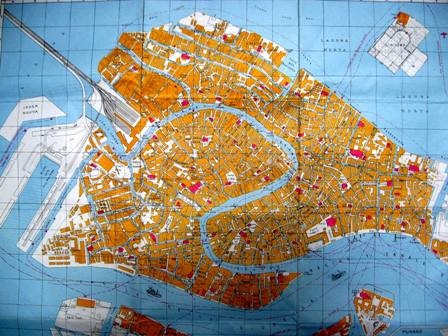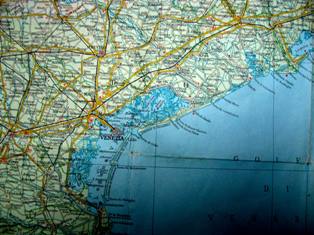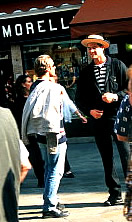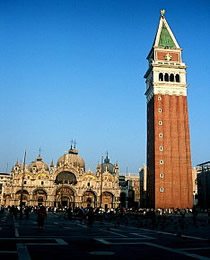Venice has two stations, Mestre and Santa Lucia. For thouse who are travelling beyond Mestre, chances are very strong that they are a tourists. There in the Venice you can see water and various buildings and boats and shops and of cource tourists.
Venice tourism
There is something magic that attract people from whole the world. Obviously, there are no cars or mopeds in Venice. Transportation is either by water or on foot. If you have a bike - forget it. There are only narrow streets with climbing and descending staircases that lead to the hundreds of bridges that span the myriad canals.
To the city of Venice
The orientation through the streets and squares of Venice is a pretty difficult especialy for people who dont know it well. At first you need a detailed map of Venice an some important information.
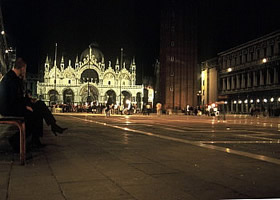
Three kinds of vessel are used by the public transport: the Vaporetto, the Motoscafo and the Motobave. The Vaporetto is the most common a medium size water-bus which collects and drops off passengers at all stops; the Motoscafo is smaller and faster because it stops only at certain places along the route and the Motonavre is large and is used only outside the city.
The Veneti, who by the 13th. Century had achieved so much in terms of social values, eight centuries previously were only just beginning to emerge onto the stage of history. They lived, fearful and forolorn in an ill-defined triangle of land the base of which was formed by the River Po and the sides by the Adriatic Sea and the Alps.
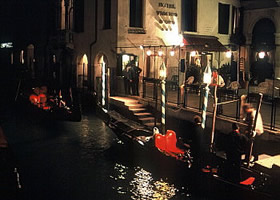
Short history and architectural styles in Venice
The northern-most tip of the triangle was defended by the fortress of Aquilea. Some inhabited cities which already boasted a long tradition-Padua, Altino, Oderzo, Concordia, žaquileia – and devoted themselves to agriculture and horse-breeding as well as to the manufacture of waponry and glass. Others lived in forgotten little villages scattered along the coast fishing and manufacturing salt.
As a result of its geographical position, of the way is developed over the centuries and of the lack of any strong classical tradition, the art and culture of Venice up to the 12 th./13/. Centuries remained essentially Byzantine, witness the greates of all the citys religious buildings , the basilica of St. Marks.
A few unmistakable basic elements identify byzantine style: rounded, stilted arches, with later examples assuming an undulating horseshoe shape; capitals decorated with elegant relief engaving of leaves and symmetrical, matching figures; colourful marble-work. Romanesque style, with its simple rounded arhes and thick, solid supporting walls which was typical of 12th. And 13th. Century buildings, never rally harmonized with the spirit and true nature of the city. The Palace of the Doges, the important Venetian public building and a classic symbol of Venices beauty, was built in Gothic style.
The fundamental unit from which the Venetian palace developed was the Byzantine warehouse – a one-storey building with a spacious portico and loggia. The Venetian palace retained the ground floor portico and first floor loggia and it is from this base that the walls rise faced with fine marble and crowned with pinnacles tipped with marble spheres to give a lightness to the whole.
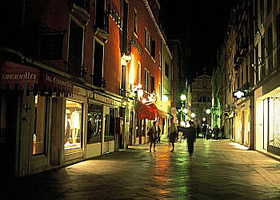
The Renaissance coincided with Venices century of greatest splendour – the 15th. Century. Architecture during the Renaissance in Venice often imposed rather heavy classical forms on the city and the influence of Michelangelo was felt. But it was rather in the decoration of ceiling, vaults and walls that Renaissance style made its finest contributions, and that because it was more in keeping with the etablished local traditions in these fields.
Rather than the rounded arches, the orders and the proportions which governed the delineation of space, it was the new spirit with which these elements where manipulated which characterized the essence of Renaissance influence.
In the 17th. Century the Baroque,which was always prone to over-decoration in its attempt to harness the chromatic possibilities of movement, left one masterpiece in the church of S. Marija della Salute and then declined into even greater exaggeration and over-burdening of the decorative element. In the 18th. And 19th. Centuries the Neo-classical movement rose to primacy and devoted itself primarily to the restoration and protection of Venices incomparable artisic heritage.


